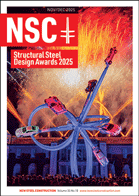News
President’s Column: To CE or not CE?
I live in Northern Ireland (NI) with a home a mere 5 miles from the UK’s only international land border which, post Brexit, is now also a border with the EU. The presence of this land border has little impact on the day-to-day movement of people, but efforts to maintain the movement of trade across the whole of Ireland caused some unique problems for consumers in NI. Initially, we had empty supermarket shelves where imports of cooked meats, in particular from mainland GB, remained stuck in border checks at Belfast Docks, to confirm that the goods would not be heading on to the EU. Subsequent re-negotiation has eased these problems, but we still notice when ordering goods online that often suppliers on the mainland do not wish to “export” to NI.
At a UK level there are also many other anomalies post Brexit that act as barriers to trade both into and within the EU. These can only be addressed by negotiation at government level, but there needs to be some clarity regarding the future direction of travel. From a structural steel perspective, the most obvious requirement is CE marking and indeed whether to continue to CE mark at all? The next problem to emerge will be EU and UK CBAM regulations, but that can wait for another day.
Post Brexit, the last government introduced both UKCA and UKNI marking for use within the UK with the eventual removal of CE marking to follow. However, the UK remained within CEN and continued to implement the rules of EN 1090 for the execution of steel structures, which are required to place fabricated structural steelwork on the UK market with a UKCA mark. To demonstrate conformity, structural steel fabricators must be audited by a UK based Certified Body to UKCA mark and by an EU based Notified Body if they wish to CE mark and export products into the EU.
As always, life in NI is slightly different. We are allowed to use both CE or UKNI within NI; we require CE marking to send steel across the border and we’re going to need UKCA to ship to the mainland. The result is the cost of two sets of audits to the same Execution and Welding standards with little benefit to anyone in the supply chain. The present government has now allowed the continued use of CE marked structural steel within the UK for an indefinite period so, if CE marked structural steel is acceptable on the UK mainland for the foreseeable future, why would we bother with UKCA and UKNI marking at all? However, there is the risk of what the next Government could bring and as always long-term clarity would help everyone.
The second generation of Eurocodes are coming; the new Execution standard will contain a greater emphasis on sustainability and reuse of steel and the Construction Product Regulations (EU) will be updated accordingly. In all likelihood, our present Government will adopt the new CPR within the UK, and CE marking will be updated accordingly. As a quid-pro-quo, if the UK follows these regulations and implements EU practice why shouldn’t UK based certification services be once again recognised as Notified Bodies by the EU? This would provide both clarity for all going forward and provide a basic level of conformity for all construction products. Also, it would be helpful to see these requirements finally enforced throughout the market with appropriate sanctions for non-compliance.
The UKCA mark could be retained as an overarching measure of competence, quality and safety for companies working within the UK. This would go beyond the basic Execution requirements covered by the CE marking regime required by all and whether to CE mark or not to CE mark would no longer be the question.
Chris Durand
BCSA President



